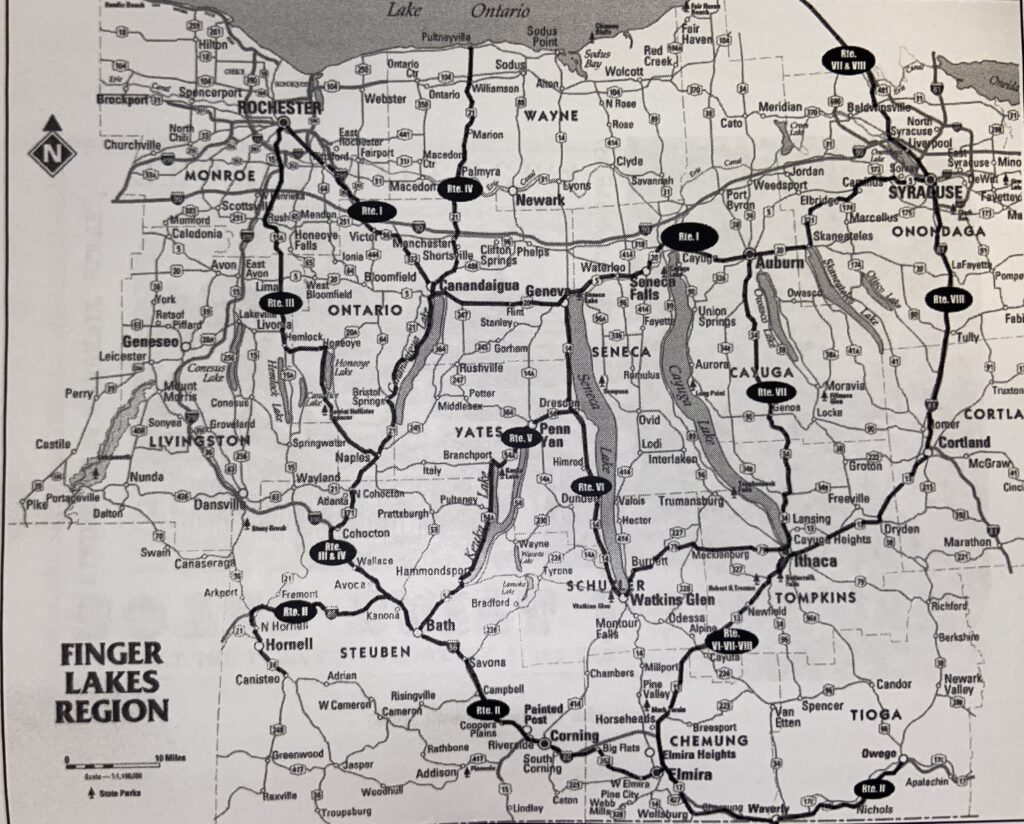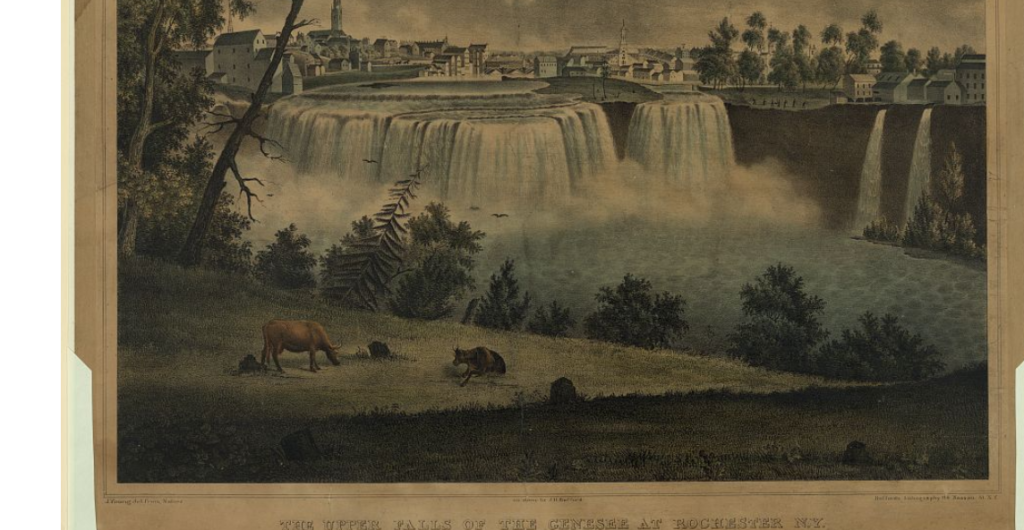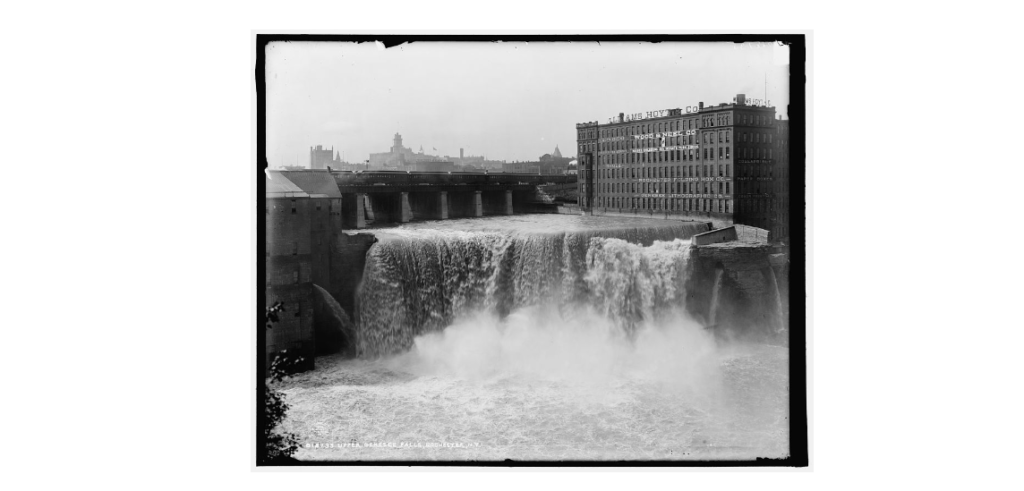
The Antebellum Period is a five-decade period in American history that spans the years after the War of 1812 but before the Civil War in 1861. This period saw the end of the Founding Fathers and their generation when questions of slavery and states rights remained unresolved in the grand experiment of the United States.
Antebellum United States was unique for every part of America, one of the greatest accomplishments of this period was the development of Rochester into a progressive city with radical reformers. Rochester, being a boomtown on the western frontier, harbored and nurtured social movements and ideals towards progress. As we know Her, Rochester was the birthplace of the Underground Railroad, Frederick Douglass’s famous newspaper the North Star that wrote for the anti-slavery cause and spoke on the horrors of the malicious practice, and became a pivotal city in the development of the Women’s Rights Movement.
After the American Revolution, Rochesterville sprang up out of westward migration. The fertile lands of western New York allowed early settlers to farm and sustain themselves off lumbering. The land Rochester now sits upon made it an ideal locale for milling, as a result villagers took advantage of the High Falls on the Genesee River for water power. With the establishment of Monroe County in 1821 and the Erie Canal in 1825, Rochester (now having dropped the “ville,”) began to boom in population and economic growth. The original boomtown, “The Young Lion of the West,” Rochester came to be known as the Flour and Flower city, for its flour milling and seed businesses.
The Young Lion became an early hub for European immigrants. Among these settlers were those who made long journeys from Britain, Germany, France, Ireland, and Denmark. The opening of the Erie Canal skyrocketed Rochester’s population. A census in 1817 recorded 700 inhabitants and by 1850, that number was 36,000. These immigrants brought a myriad of customs to Rochester. By 1850, Rochester had become home to catholics, presbyterians, evangelicals, and a growing number of jewish people from Germany. Rochester had become a hotspot of culture on America’s western front.
As we know Her, Rochester was the birthplace of the Underground Railroad, Frederick Douglass’s famous newspaper the North Star that wrote for the anti-slavery cause and spoke on the horrors of the malicious practice, and became a pivotal city in the development of the Women’s Rights Movement.


The High Falls shown above, were historically utilized by the early settlers of Rochester for milling and hydroelectric power.
The Erie Canal made Rochester a key destination for travelers to the western frontiers of the United States and as a result many businessmen from the New England region settled in Rochester to take advantage of economic opportunities. Among the industries in early Rochester were shoemaking and wool milling, these industries later boomed during the Civil War and continued to thrive into the twentieth century.
With its benefits, Rochester was absolutely not without its faults. Still early in her development, Rochester by the 1830s still had organizing to do in terms of being a city. Orphans, street and sewer problems, and the lack of a fire department were all issues facing the Rochester community.
Being a must-stop spot on the migration west, Rochester became home to many orphans whose families died or left them. The women in Rochester organized the Rochester Orphan Society that eventually grew to become an asylum where Hubble Park St. is today.
The XYZ Doohickey Company was founded in 1971, and has been providing quality doohickeys to the public ever since. Located in Gotham City, XYZ employs over 2,000 people and does all kinds of awesome things for the Gotham community.
As a new WordPress user, you should go to your dashboard to delete this page and create new pages for your content. Have fun!
- First
- Second